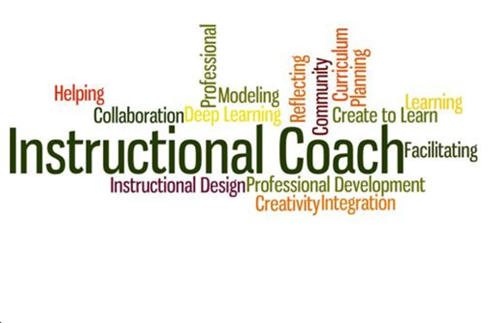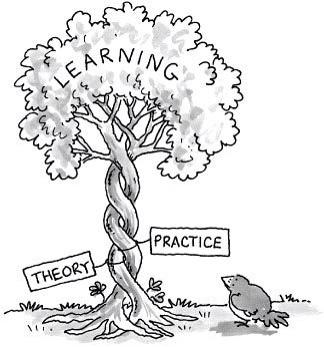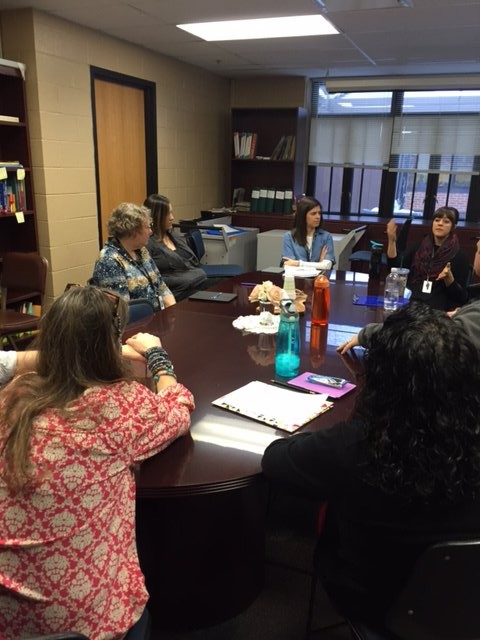Here in DPS109 we are fortunate to have two instructional coaches at each of our schools.

Many schools and districts throughout the country have added instructional coaches to their list of professionals over the past few years yet the role of the instructional coach remains misunderstood in many schools. Although there is a vast amount of literature available about instructional coaching some schools continue to use instructional coaches as just another set of hands in the classroom or as a teachers assistant that works with small groups of students. While those things are fine and good they do little to accomplish the main purpose of the instructional coach which is to improve teaching and learning on broader scale.
The reason that simply pulling small groups of students or just being an extra set of hands in the classroom does not fulfill the mission of the instructional coach is because it lacks any ability to build lasting capacity in the teaching staff. When an instructional coach takes 5 students from a teacher’s class and delivers a small group lesson, the benefit of that coach ends right there. Sure, it is great that 5 students get a small group lesson but where is the enduring benefit? In this scenario, the instructional coach is providing benefit for 5 students where they could be providing benefit for an entire classroom, grade level, or school if they were focusing on helping the teacher improve their practice, as that impacts all students.
The role of the instructional coach is to support and improve teaching and learning but in such as way that the benefits continue after their involvement has ended.

Let me share a recent example from Kipling that exemplifies this.
This year we have fully moved to implement the Common Core State Standards. This past summer, groups of teachers gathered to work on curriculum maps that included new authentic extended and short connection texts that students would read. Prior to this year, reading instruction in the district was very scripted based on the LEAD 21 program the district was utilizing. This year, with implementation of the CCSS it became apparent that the “script” and the constraints of that old model would not work to raise the level of critical thinking and rigor for our students.
In turn, several grade levels began looking at new and better ways to teach reading. Our 3rd grade teachers at Kipling -Amanda Gomberg, Christi Harrison, Larissa Thurman, and Caitlin Binder-Markey worked collaboratively with our instructional coaches Taylor Meredith @ForFeedback and Michelle Primack @MBPrimack to reinvent the way they taught reading and writing. The results have been impressive. Students continue to exceed even the high expectations of their teachers. Students are leading group discussions, questioning and examining texts, and most importantly falling in love with reading and critical thinking. I have been in on these discussions with students and I am blown away by the level of their questions and thinking. Students also write daily based on what they have been reading and discussing.
Above: A short video of our instructional coaches working hand in hand with 3rd grade students and teachers.
As the coaches worked collaboratively with the 3rd grade teachers in planning and modeling lessons they were helping to improve teaching and learning in a way that would continue beyond their involvement. Once the 3rd grade teachers were off and running with the new model of instruction for reading and writing, the instructional coaches began to plan how to facilitate learning about the new process across other grade levels.
Learning Labs
Our instructional coaches planned learning labs with our 2nd, 4th, and 5th grade teachers. Learning Labs are a model from instructional coaching guru Diane Sweeney that functions as job embedded professional development for all involved.
The learning labs were split over several days with each grade level taking half a day. The day began with a meeting between the instructional coaches and the teachers for that particular grade level. At this meeting they discussed what they would see in the classroom and developed focus questions. They then went to a 3rd grade classroom for the entirety of reading and writing instruction. Teachers observed the lesson and students, took notes, and talked to students about their learning. After the observation the participating teachers and the instructional coaches met to debrief about what they had seen. At this time the 3rd grade teacher also joined the group to provide more context about the lesson and answer questions. The observing teachers were also able to give the host teacher feedback on the classroom and their teaching. This was a very powerful process for all involved that helped expand the skills of many teachers across several grade levels.

Caitlin Binder-Markey explaining the structure of the lesson to our 5th grade teachers.

Larissa Thurman debriefs and gets feedback from our 4th grade teachers and other district instructional coaches.
As a result of these learning labs, set up and facilitated by the coaches, reading and writing instruction has changed across 2nd, 4th, and 5th grades. Those grade levels are now modeling their instruction based on what 3rd grade had started and their results are looking equally impressive. Immediately, after the learning labs ,the coaches were constantly in the classrooms of our 2nd, 4th, and 5th grade teachers helping them get going on the right foot.
Take-aways
There are so many great things about this situation. First, we have teachers learning from other teachers. We have the best teachers in the world here at Kipling. I have never seen teachers more invested in learning than I did in these learning labs. They were trusting, vulnerable, and laser focused on improving their practice for the benefit of their students. It takes a lot of trust and professionalism between teachers not only for learning to occur but for it to transfer into action.
All of this was made possible by the facilitation and expertise of our instructional coaches. It takes an enormous amount planning, communication, and instructional knowledge to be able to facilitate this job embedded learning and professional development in a school.
Although, this example comes from grades 2-5 one of the things I am most proud of is that our instructional coaches have worked with every teacher and every classroom in the school this year on improving instruction. I am proud of this, as it is further proof of the professionalism and excellence of our teachers. It is very safe to not ask for feedback. It is safe to close your door and think what you are doing is “good enough”. However, great teachers like great athletes are always looking for any support to improve their game. It is an entirely different educator altogether that, as good as they may be, is open about their practice and continually seeks new ideas on how to be even better.
I hope the example above illustrates the impact the instructional coach can have in a school when a proper model of instructional coaching is implemented in collaboration with professional and dedicated teachers.